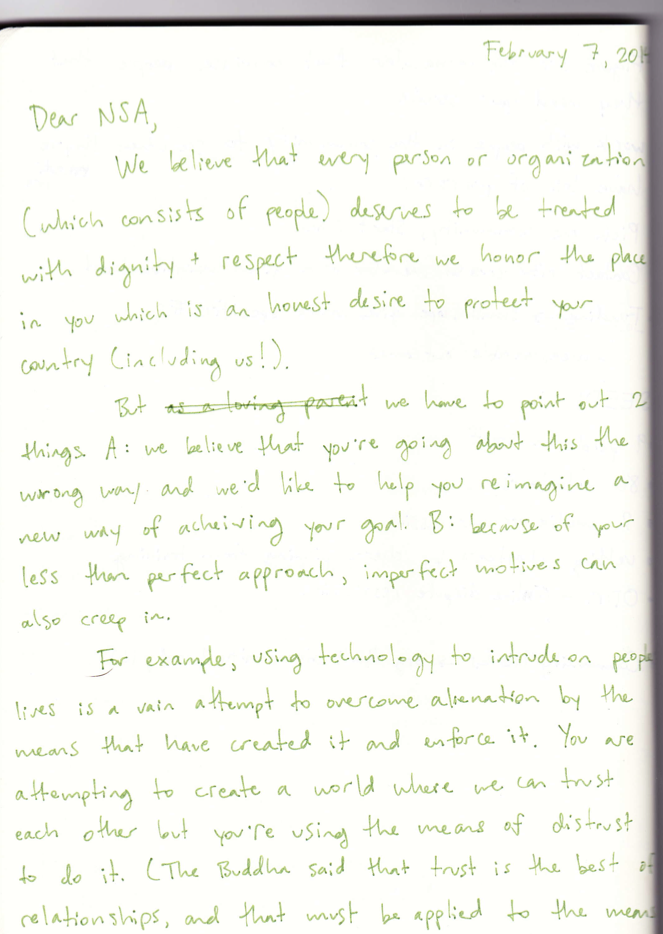Here’s an example of one of our Hope Tank sessions. Enjoy!
Members in discussion: Mica, Peijman, Jill, Stephanie and Michael.
We were able to start hope tank on a positive note, working on a “love letter” to the NSA for Rivera Sun’s radio program. We wanted to start this letter off by finding common ground by grounding the letter in the principle that “every person deserves dignity and respect.” While we listed all of the things that were “wrong” about what the NSA is doing, we recognized that their existence is born, or at least reinforced, by our own mistrust of one another. To this end, in order to challenge the NSA’s current methodology we maintained that we would both build a culture of trust while also resisting nonviolently out of love. The love letter ended on a very humorous note–namely, that we did not need to tell them who was writing it, because they already knew. . .
We also worked out a new segment for Peace Paradigm Radio that we are calling the “‘Yeah, but…’ segment.” In this segment, we will address common questions about and challenges to nonviolence. Some of these questions include:
- Is nonviolence passivity or “just being nice” to people?
- Is there ever a time when violence is better than nonviolence?
- How do you “use” nonviolence?
and more. . .
In this discussion, Stephanie formulated a new principle at Metta, the “Tuff Principle.” This principle expands upon Gandhi’s “madman with the sword” principle where if someone is threatening to slaughter people in a village with a sword, you might need to kill that person to prevent greater violence. It is founded on the notion that if the choice is between violence and cowardice, then it is better to choose violence. However, the Tuff Principle draws from the experience of Antionette Tuff who chose a third way between violence and passivity when the modern “madman with a sword,” i.e. a drugged young man with a gun threatening a school, was talked out of his violent act with nonviolent courage. The Tuff Principle maintains that there is always a third way between cowardice and violence, and we can always imagine some kind of nonviolent response in any situation if we are willing to see it.

-The Tuff Principle-
Moreover, we discussed how a stark choice between violence and cowardice in the real world is extremely rare. When you think about such a situation, you immediately forget the inner environment, and the nonviolent person can be trained never to forget the inner environment.
Finally, we emphasized that nonviolence is a practice, and like a muscle it can be strengthened over time. Mica added to this thought to end hope tank on another positive note: nonviolence is not just a way to fight something negative but to gain something positive. Our experience tells us it is so.










[…] By stephanie […]